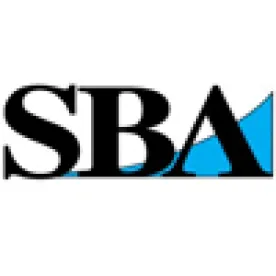Rules and provisions for COVID-19 stimulus packages are rapidly evolving, and the measures and interpretations described here may change. This analysis represents our best interpretation and recommendations based on what where things currently stand.
On Friday, April 3, 2020, the Small Business Administration (SBA) released a supplemental Interim Final Rule (IFR) and a supporting guidance document for the Paycheck Protection Program (PPP).
Despite having issued the Interim Final Rule and supporting guidance document, questions remained regarding various provisions of the PPP. On Monday, April 6, 2020, the SBA provided additional guidance for borrowers and lenders in the form of Frequently Asked Questions (FAQs), which will be updated on a regular basis. The SBA has made it clear that the U.S. government will not challenge actions by lenders that conform to the IFR, supporting guidance, and FAQ document.
APril 13, 2020: The Small Business Administration (SBA) and U.S. Treasury have once again updated their Frequently Asked Questions (FAQs), revising their April 6 guidance for borrowers and lenders. The SBA has made it clear that the U.S. government will not challenge actions by lenders that conform to the Interim Final Rule, supporting guidance, and FAQ document.
Below, please find an additional update of our summary, incorporating new information provided in the FAQs, as updated through April 10, 2020. Updates to our April 6 summary are in bold.
This is not a complete analysis of the new guidance, but addresses some of the questions our clients have been asking.
|
Section |
Topic |
Provision |
|
2(a) |
Are small business concerns as defined in the Small Business Act required to have 500 or fewer employees? |
No. A business may be considered a small business concern, even if it has more than 500 employees, if it qualifies under the SBA’s employee-based or revenue-based size standard corresponding to its primary industry. Click here to determine if your business meets the industry size standards. Additionally, a business can qualify as a small business concern if it meets both tests in SBA’s “alternative size standard” as of March 27, 2020: (1) maximum tangible net worth of the business does not exceed $15 million; and (2) the average net income after federal income taxes of the business for the two full fiscal years before the date of the applicant does not exceed $5 million. |
|
2(a) |
Does my business have to qualify as a small business concern as defined in the Small Business Act? |
No. Eligible businesses also include businesses with 500 or fewer employees, including foreign-owned entities, whose principal place of residence is in the United States, or if the business meets the SBA employee-based size standards for the industry in which it operates. In addition, PPP loans are available for nonprofit organizations, veterans’ organizations, and tribal concerns. |
|
2(a) |
Am I subject to the SBA’s affiliation rules? |
Yes. Borrowers must apply the affiliation rules under 13 CFR 121.301(f). However, the following entities are waived from the affiliation rules: (1) Businesses with fewer than 500 employees that have a NAICS code 72 designation; (2) Franchises assigned a franchise identifier code by the SBA; and (3) Businesses that receive financial assistance from a company licensed under section 301 of the Small Business Investment Act. In addition, faith-based organizations are exempted from the affiliation rules, if the relationship is based on a religious teaching or belief, or otherwise constitutes a part of the exercise of religion. |
|
2(d) |
What time period do I use to determine the number of employees and payroll costs? |
Either from the previous 12 months or from calendar year 2019. For seasonal businesses, use your average monthly payroll from either February 15, 2019 or March 1, 2019 to June 30, 2019. |
|
2(e)(ii) |
Do I include payments to independent contractors in calculating my payroll? |
No. Independent contractors may apply for a PPP loan on their own so they do not count for purposes of a borrower’s PPP loan calculation. |
|
2(f) |
Is paid sick leave covered under PPP loans? |
Yes. Payroll costs include costs for employee vacation, parental, family, medical, and sick leave. However, sick and family leave wages for which credit is allowed under the Families First Coronavirus Response Act will not qualify. |
|
2(g) |
What qualifies as payroll costs? |
Any employee compensation in excess of an annual salary of $100,000 is excluded from the definition of payroll costs. This applies only to cash compensation, and not to non-cash benefits, including (1) employer contributions to defined-benefit or defined-contribution retirement plans; (2) payment for the provision of employee benefits consisting of group health care coverage, including insurance premiums; and (3) payment of state and local taxes assessed on compensation of employees. |
|
2(i) |
Interest Rate |
The interest rate will be 100 basis points or 1%. |
|
2(j) |
Maturity |
Two years. |
|
2(m) |
Is the PPP “first-come, first-served?” |
Yes. |
|
2(o) |
Guidance regarding loan forgiveness - “Spend” requirement for loan forgiveness is 75% on payroll. |
Not more than 25% of the loan forgiveness amount may be attributable to non-payroll costs. While the Act provides that borrowers are eligible for forgiveness in an amount equal to the sum of payroll costs and any payments of mortgage interest, rent, and utilities, the Administrator has determined that the non-payroll portion of the forgivable loan amount should be limited to effectuate the core purpose of the statute and ensure finite program resources are devoted primarily to payroll. The Administrator has determined in consultation with the Secretary that 75% is appropriate in light of the Act’s overarching focus on keeping workers paid and employed. Additionally, the amount of forgiveness depends on the borrower’s payroll costs over an eight-week period. The eight-week period begins on the date the lender makes the first disbursement of the PPP loan to the borrower. The lender must make the first disbursement of the loan no later than ten calendar days from the date of the approval of the loan. |
|
2(r) and (s) |
Guidance regarding required use of proceeds. |
(r) At least 75% of the PPP loan proceeds shall be used for payroll costs. For purposes of determining the percentage of use of proceeds for payroll costs, the amount of any EIDL refinanced will be included. For purposes of loan forgiveness, however, the borrower will have to document the proceeds used for payroll costs in order to determine the amount of forgiveness. While the Act provides that PPP loan proceeds may be used for the purposes listed above and for other allowable uses described in section 7(a) of the Small Business Act (15 U.S.C. 636(a)), the Administrator believes that finite appropriations and the structure of the Act warrant a requirement that borrowers use a substantial portion of the loan proceeds for payroll costs, consistent with Congress’ overarching goal of keeping workers paid and employed. (s) If you use PPP funds for unauthorized purposes, SBA will direct you to repay those amounts. If you knowingly use the funds for unauthorized purposes, you will be subject to additional liability such as charges for fraud. If one of your shareholders, members, or partners uses PPP funds for unauthorized purposes, SBA will have recourse against the shareholder, member, or partner for the unauthorized use. |
| 3 | Guidance regarding promissory notes and SBA Authorization documents. |
Lenders may use their own promissory note or an SBA form of promissory note in connection with the PPP loan. Lenders do not need a separate SBA Authorization for SBA to guarantee a PPP Loan. However, lenders must have executed SBA Form 2484(the Lender Application Form for the Paycheck Protection Program) to issue PPP loans and receive a loan number for each originated PPP loan. Lenders may include in their promissory notes for PPP loans any terms and conditions, including relating to amortization and disclosure, that are not inconsistent with Sections 1102 and 1106 of the CARES Act, the PPP Interim Final Rule and guidance and SBA Form 2484. |
|
3(b)(iii) |
Payroll documentation required. |
The guidance instructs lenders to confirm the dollar amount of average payroll costs for the preceding calendar year. It is the applicant’s responsibility to provide calculations of payroll costs, and the applicant must attest to the accuracy of those calculations. There is still no specific documentation requirement. However, the guidance provides that borrowers must submit such documentation as is necessary to establish eligibility. These documents may include payroll processor records, payroll tax filings, or Form 1099-MISC, or income and expenses from a sole proprietorship. For borrowers that do not have any such documentation, the borrower must provide other supporting documentation, such as bank records, sufficient to demonstrate the qualifying payroll amount. Each lender’s underwriting obligation under the PPP is limited to a good faith review, in a reasonable time, of the items above. The level of diligence by the lender should be informed by the quality of supporting documents supplied by the borrower. The lender’s underwriting obligation also includes reviewing the Paycheck Protection Application Form. The lender should work with the borrower to remedy any errors in the borrower’s calculations or material lack of substantiation in the borrower’s supporting documents. |
|
3(c) |
Lender responsibility limited in connection with determining loan forgiveness. |
Lenders can rely on borrower documentation for loan forgiveness. Lenders do not need to conduct any verification if the borrower submits documentation supporting its request for loan forgiveness and attests that it has accurately verified the payments for eligible costs. The Administrator will hold harmless any lender that relies on such borrower documents and attestation from a borrower. The Administrator, in consultation with the Secretary, has determined that lender reliance on a borrower’s required documents and attestation is necessary and appropriate in light of section 1106(h) of the Act, which prohibits the Administrator from taking an enforcement action or imposing penalties if the lender has received a borrower attestation. |
|
3(d) |
Significant origination fees to lenders – on fully guaranteed loans |
SBA will pay lenders fees for processing PPP loans in the following amounts: (i) 5% for loans of not more than $350,000; (ii) 3% for loans of more than $350,000 and less than $2 million; and (iii) 1% for loans of at least $2 million. |







 />i
/>i

